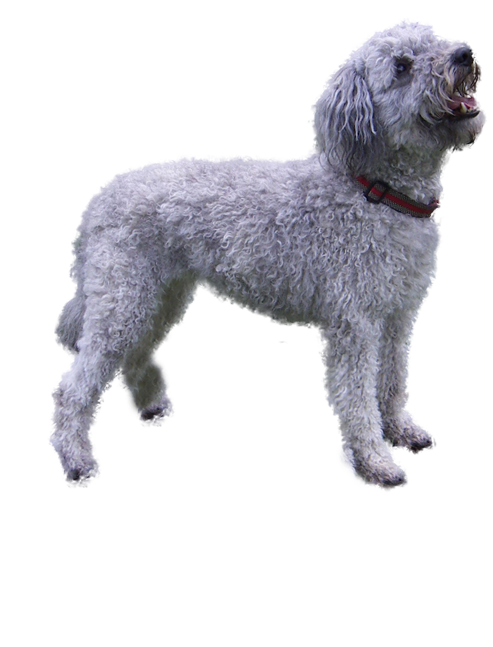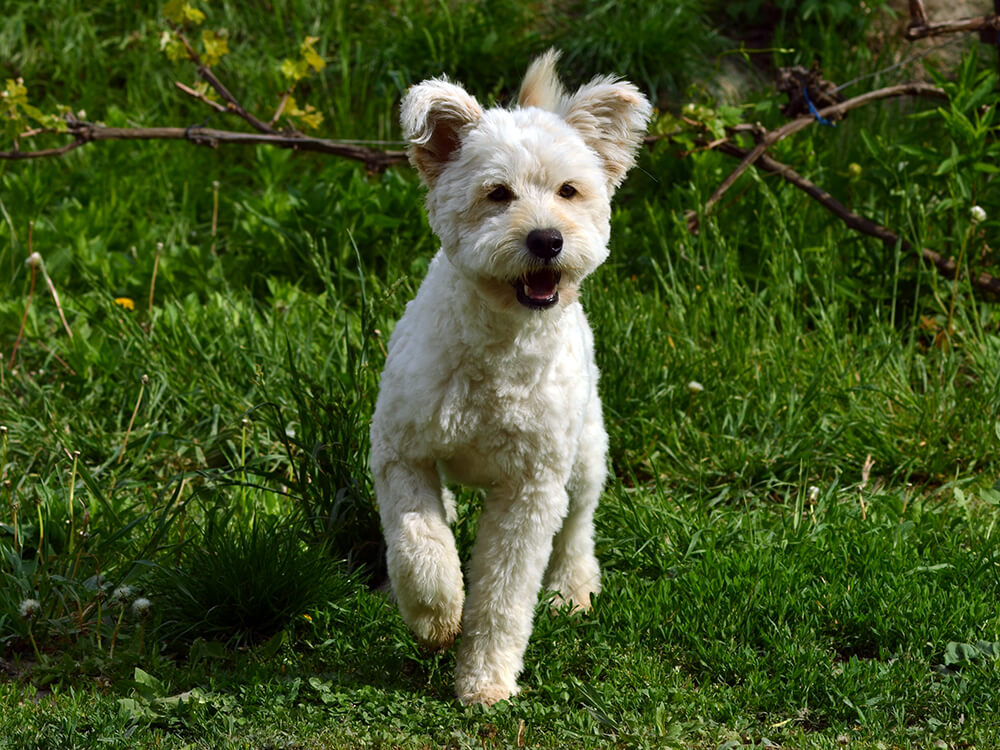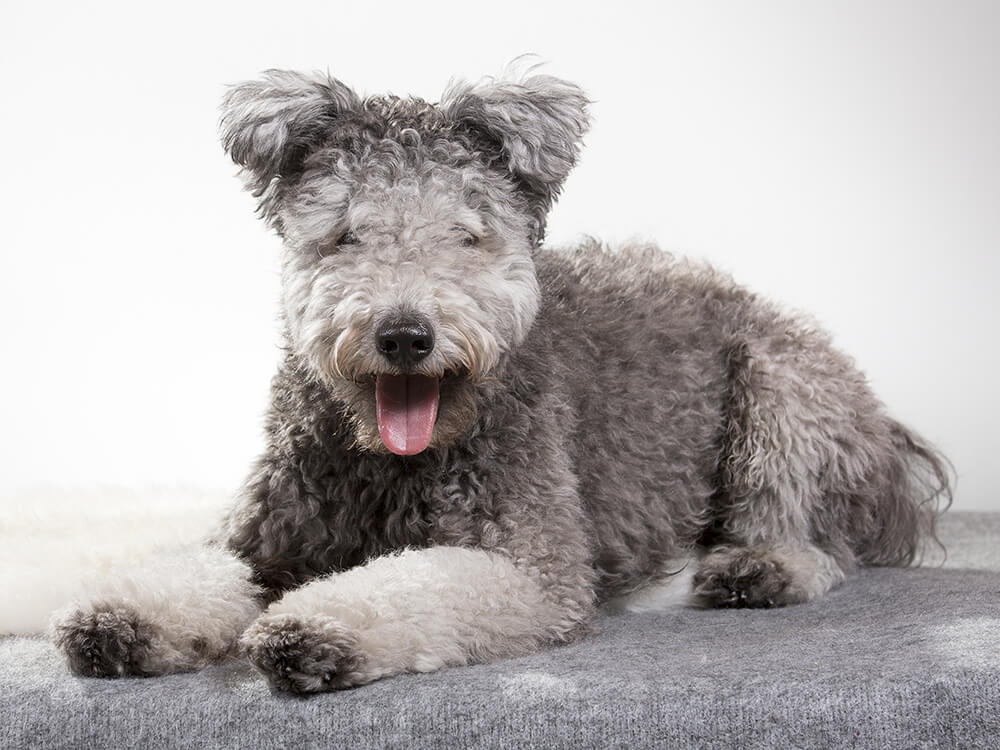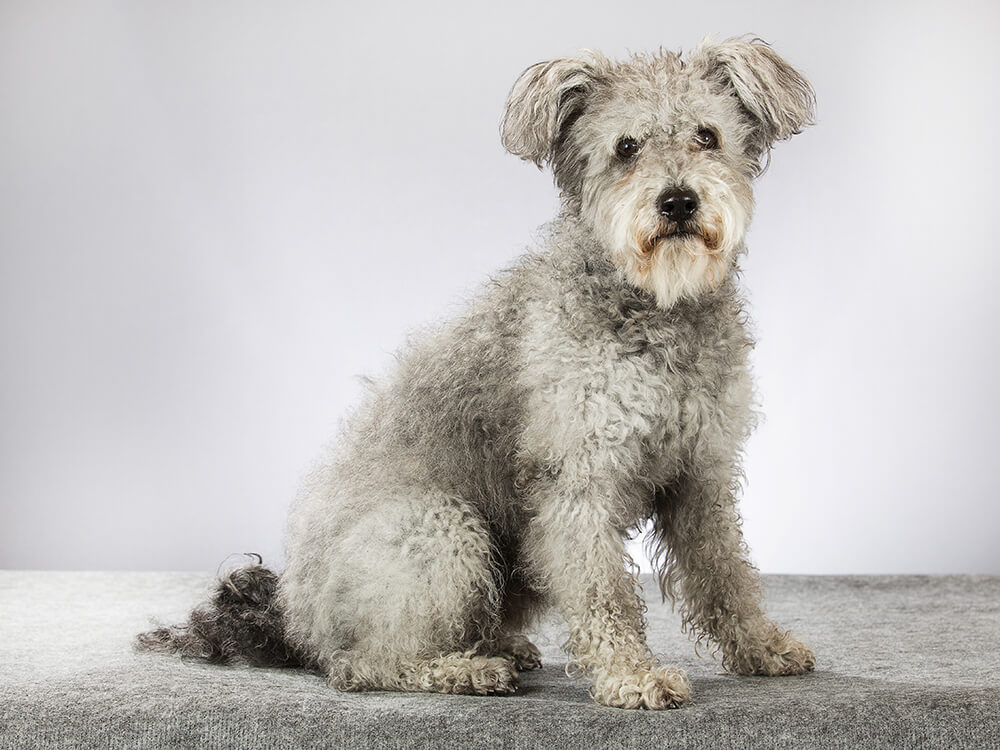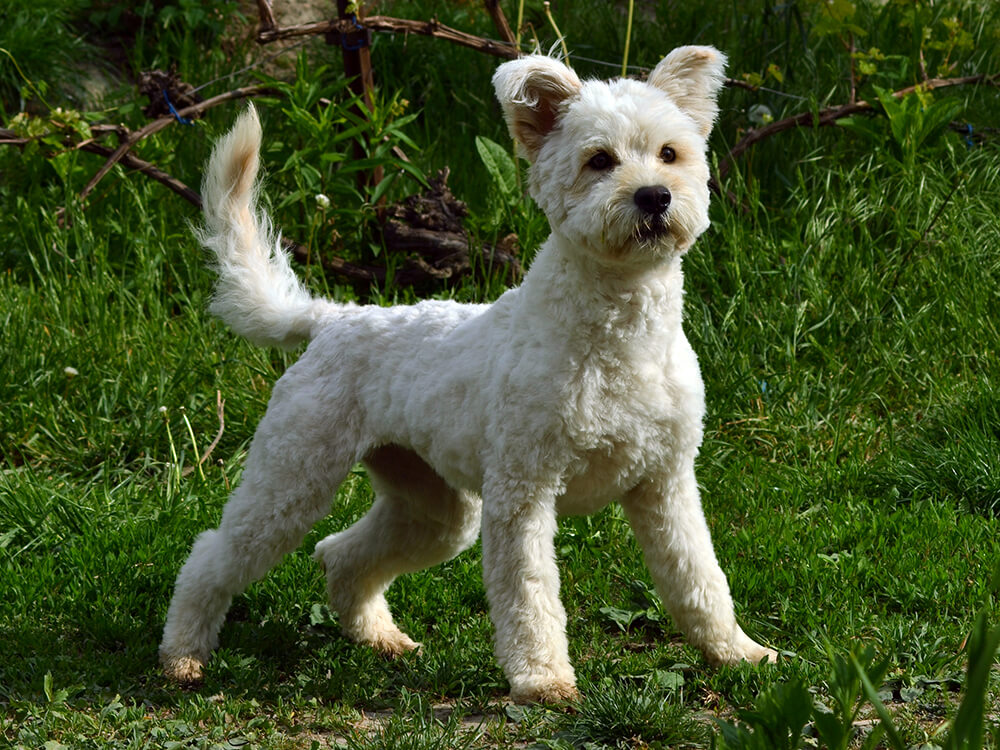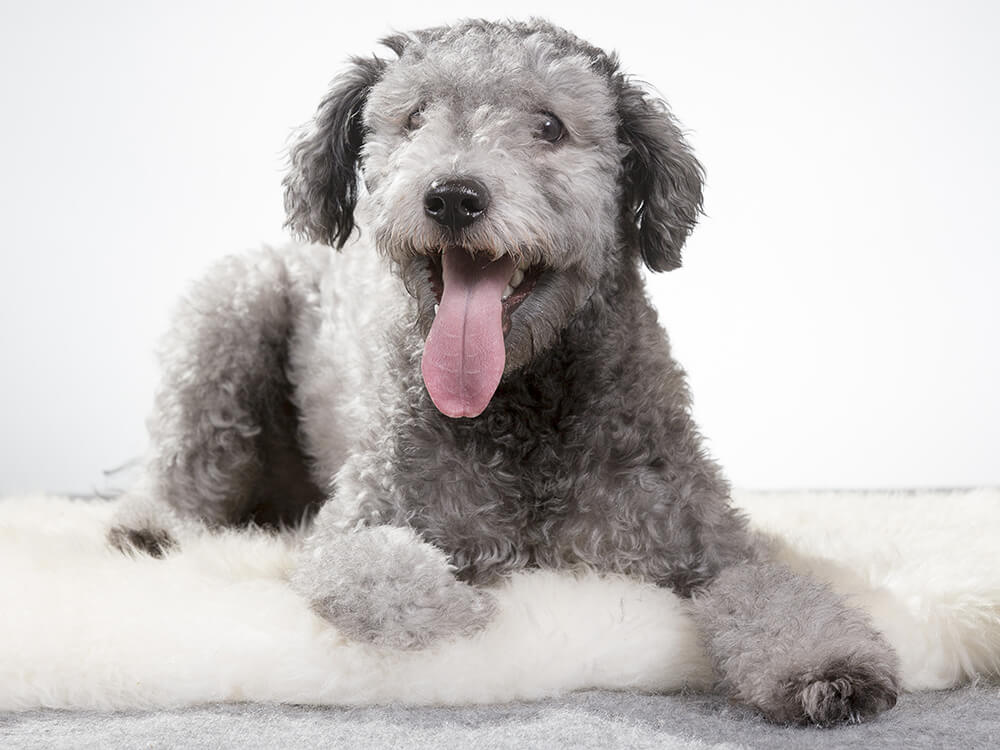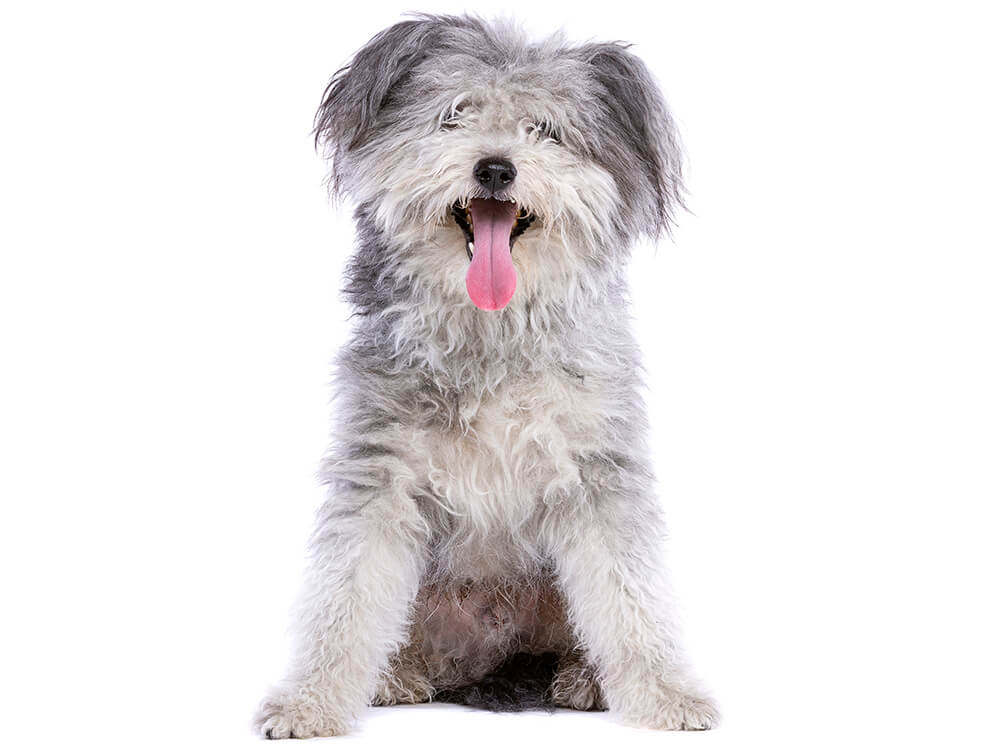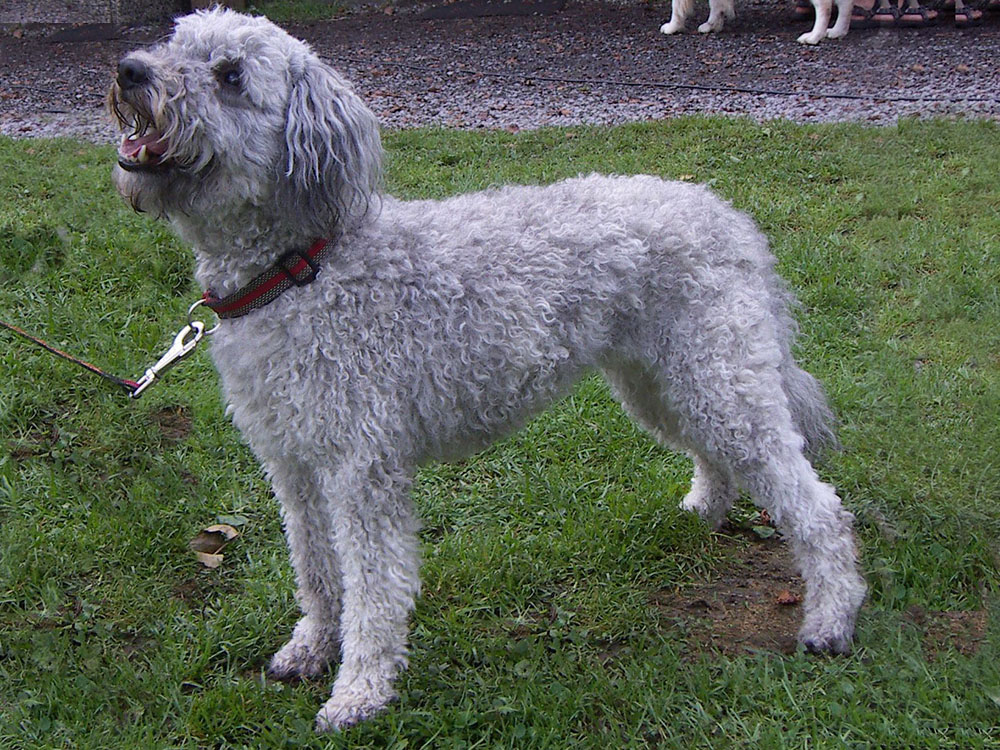
Hungarian Pumi Breed Pictures
Vital Breed Stats
| Height: | 16 - 19 cm M | 15 - 17 cm F |
| Weight: | 22 - 33 kg M | 18 - 29 kg F |
| Breed Group: | Hound Dog Group |
| Life Expectancy: | 10 - 13 years |
| KC Registered: | No |
Breed Characteristics
| Size: |  |
| Grooming: |  |
| Exercise Level: |  |
| Trainability: |  |
| Barking Level: |  |
| Good with Children: |  |
| Good with other pets: |  |
| Affectionate: |  |
| Protective: |  |
| Cost to Keep: |  |
Give a thumbs up if you love the Hungarian Pumi

0
More About the Breed
History
The ancestry of the Hungarian Pumi did not originate from Hungary. The breed was brought to Europe together with other herding dogs by the Magyar tribe. It is believed that the Hungarian Pumi’s progenitors include herding dogs from Tibet such as the Tsang apso.
During the early twentieth century, three separate breeds were established as native to the country. These were the Pumi, Mudi, and Puli. The Pumi was developed in the west of Hungary, whilst the Puli was developed in the east. The Mudi was developed in the south of Hungary. The Hungarian Pumi is also thought to be a descendant of the Puli, German sheepdogs, and French sheepdogs possibly the Pomeranian and Hutespitz.
The main purpose for developing the Hungarian Pumi was to have a dog that can herd livestock such as cattle, goats, pigs, and sheep. However, the breed proved to be adept in other fields of work. He also has a talent for guarding the livestock and hunting vermin. The Pumi is trained to use his barks when herding livestock, thus he can be quite vocal. The original breed standard describes the breed as ‘unable to keep quiet.’
For centuries, the Pumi was believed to be a variety of the Puli. However, in the early 1900s, Emil Raitsitz initiated a breed standard for the two breeds. During the 1920s, both breeds were placed into separated breeding programmes. These helped in defining and stabilising both of the breeds' distinctions. The Pumi slowly developed to have more balanced toplines, elongated muzzles, and a coat that's wholly different from the Puli's. Today, the Hungarian Pumi is still prized as a herding dog. However, his charm and cheerfulness are earning him more fans that would love him to become their companion.
Appearance
The Hungarian Pumi is a small-sized breed with a compact body. He has a heavy deep chest and ribs that are slightly flat. His eyes are somewhat slanted and dark with narrow eyelids. He has a long muzzle, which is his most distinctive facial feature. His ears stand straight and tipped upward, a sign of the breed's alert nature. The Hungarian Pumi's circular tail is carried high, which is a good indicator of the dog's merry nature. It also has a little undercoat. His firm and sturdy hind feet have hard nails and elastic pads.
The breed has a corkscrew-curled coat that is thick and long. It is neither matted, formed into cords, or straight. Half of the coat is composed of soft hair and the other half by harsher fur. All of them are similar in length. Coat colours may vary from black, silver, rust, sand, reddish brown, or different shades of grey. Sometimes, white may occur too, but it is not favoured by breeders. Note that the dog's coat is always in one solid colour.
Grooming
Grooming a Hungarian Pumi needs a bit of extra effort especially when it comes to his coat. He requires a thorough brushing every three to six weeks to remove tangles and debris stuck on his coat. The coat then needs a good wetting-down to help it curl again. Once the curls are back into shape, they can be trimmed to keep the coat neat and clean. The Pumi's undercoat sheds seasonally, thus he needs to be brushed more often during this time. Avoid using the hairdryer to remove loose hair as it can dry out the coat and lead to hair brittleness.
Only bathe the Hungarian Pumi once every three months or when he gets too unkempt and starts to smell. Regular trimming of nails and ear cleaning should be incorporated in his grooming routine. Also make sure to brush his teeth every day to prevent periodontal diseases.
Temperament
The Hungarian Pumi adores his family. As a cheerful and outgoing pooch, he dedicates his time enjoying it with his human companions. The Hungarian Pumi is not averse to welcoming head pats, hugs, and other acts of affection. It is not uncommon for the dog to form a strong bond with a particular family member who showers him with love and attention.
The Pumi loves the company of kids and other pets as well, preferably ones that he’s been raised together with. However, supervision is still advised as the Hungarian Pumi tends to herd and nip. He must not be left unsupervised with pet rodents as well since he has a high prey drive due to his ratter instincts. Socialisation is key for him to grow into a fellow pet-loving dog.
Intelligence
The Hungarian Pumi is naturally wary and reserved toward strangers. At times, he would watch people first before approaching them. If you introduce a guest to the pooch, it may take some time for him to welcome the new face. The Hungarian Pumi's cautious nature makes him a good watchdog as he is ready to spring into action.
Make sure that he is socialised at an early age for him to effectively discern who is a threat and who is not. Keep in mind that he is also a barker due to his job as a watchdog, but with proper training, this trait can be curbed.
The Hungarian Pumi is a very smart dog and highly trainable. He responds well to positive reinforcement, so be sure to give him praises and treats. Since he easily gets bored and loses focus, keep your training sessions short and engaging. Despite his small stature, the Hungarian Pumi excels at dog sports, including herding trials, agility, and obedience.
Feeding
Three- to six-month-old Hungarian Pumi puppy should be fed at least one-third to one cup of dog food split into four meals daily. When he reaches six to eleven months old, feed him about 0.2 to 1 cup of food and divide it into three meals a day.
An adult Hungarian Pumi weighing 8 kg should be fed one cup of dog food per day. A 10 kg Pumi needs one to two cups of dog food daily. The same amount of food applies to a Pumi that weighs 13 to 15 kg. Be sure to split it into two meals a day for easier digestion, and obesity and dog bloat prevention.
Health
- Hip Dysplasia
- Patellar Luxation
- Primary Lens Luxation
- Degenerative Myelopathy
Exercise
A dog specifically bred to herd, the Hungarian Pumi is bursting with limitless energy. Thus, he requires ample amounts of daily exercise and mental stimulation. Walk him for at least thirty minutes to an hour a day and don’t forget to play with him. Indulge him in a game of Frisbee, puzzle games, or simply teach him new tricks and commands to keep him entertained.
Be careful not to over-exercise the Hungarian Pumi puppy as his joints and bones are still growing. Too much taxing activities could result in bone and joint problems are he grows older. Therefore, limit his exercises, including running up and down the stairs and jumping up and down the furniture.
Cost of Ownership
A well-bred Hungarian Pumi puppy costs between £500 and £1,000 or more. For the dog food, it will cost around £20 to £25 a month. The expenses of providing him with other initial basic items such as bedding, lead, and toys may cost between £200 and £400. You may be required to pay an average of £30 for each veterinary check-up. The first round of vaccinations will cost you £100, whilst yearly boosters is around £50 per shot.
If you’ll acquire pet insurance for a puppy without pre-existing health conditions, it may cost around £20 to £30 a month on average. Be sure to think about your financial situation before getting a pet.
Is a Hungarian Pumi Right for You?
- The Hungarian Pumi is highly dedicated to his family and may form a strong bond with a particular member.
- Hungarian Pumi is friendly towards children and other pets provided that he undergoes early socialisation.
- Extra effort is required when it comes to grooming for a Hungarian Pumi since he is a seasonal shedder.
- Training sessions should be kept short and engaging to retain a Hungarian Pum’s focus.
- Ample amount of exercise and mental stimulation is needed to expend his energy.
